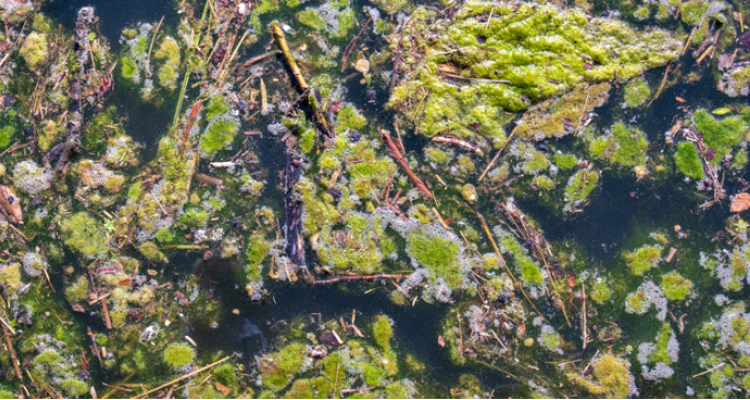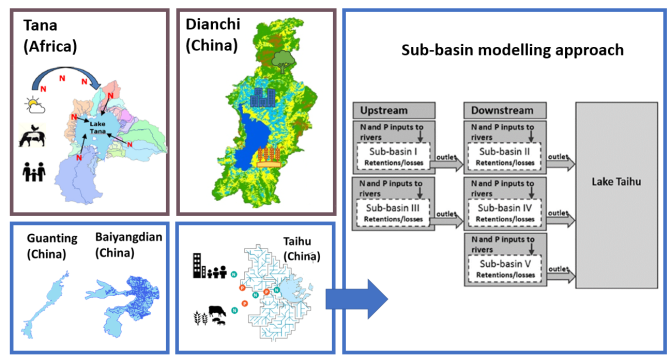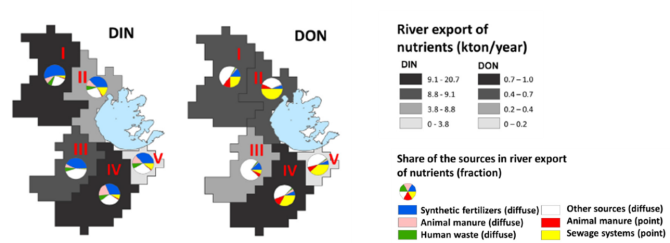
Pollution sources
Collaboration
MARINA-Lakes runs at smaller sub-basins compared to the other versions of MARINA. As a result, nutrient loads can be calculated at the lake level. This creates the opportunity to link the model with PCLake+, a model that calculates the impact of nutrient loads to lake water quality in terms of nutrient concentrations, algae, water plants, zooplankton and fish. As such, the link between MARINA-Lakes and PCLake+ enables research from driver to impact.
Model characteristics
- Model name: MARINA-Lakes
- Application: lakes in China and Africa
- Scales: sub-basins, basins, annual and seasonal
- Period: past, present and future
- Pollutants: dissolved inorganic (DIN, DIP) and organic (DON, DOP) nitrogen and phosphorus
- Sources: point (sewage) and diffuse (agriculture, natural areas)
- Main inputs: agricultural activities, sewage systems, land use, hydrology
Main outputs:
- river export of DIN, DIP, DON and DOP by source and sub-basin to lakes
- loadings of the nutrients from lake basins to lakes
Modelling approach

Model outputs (example)
